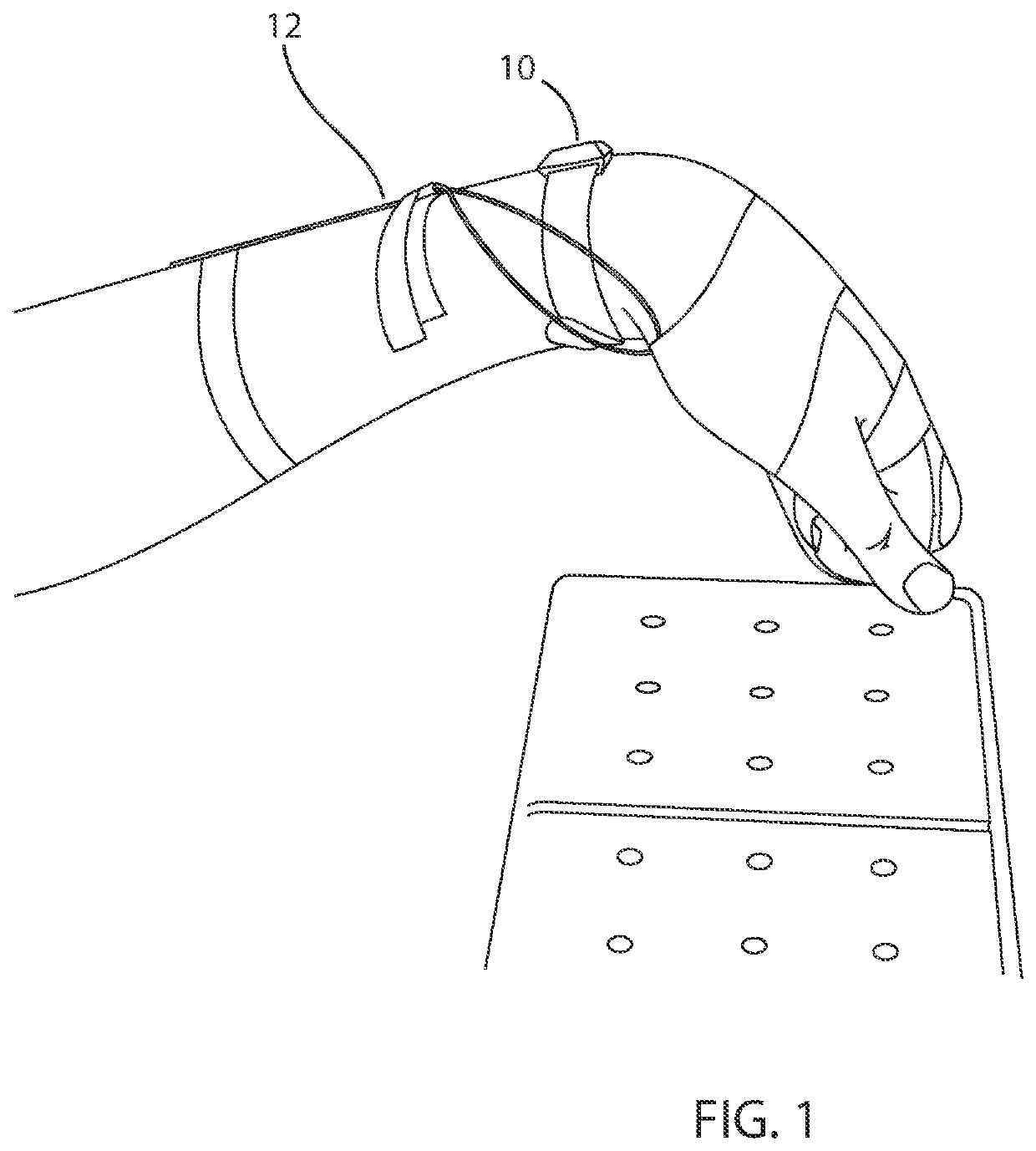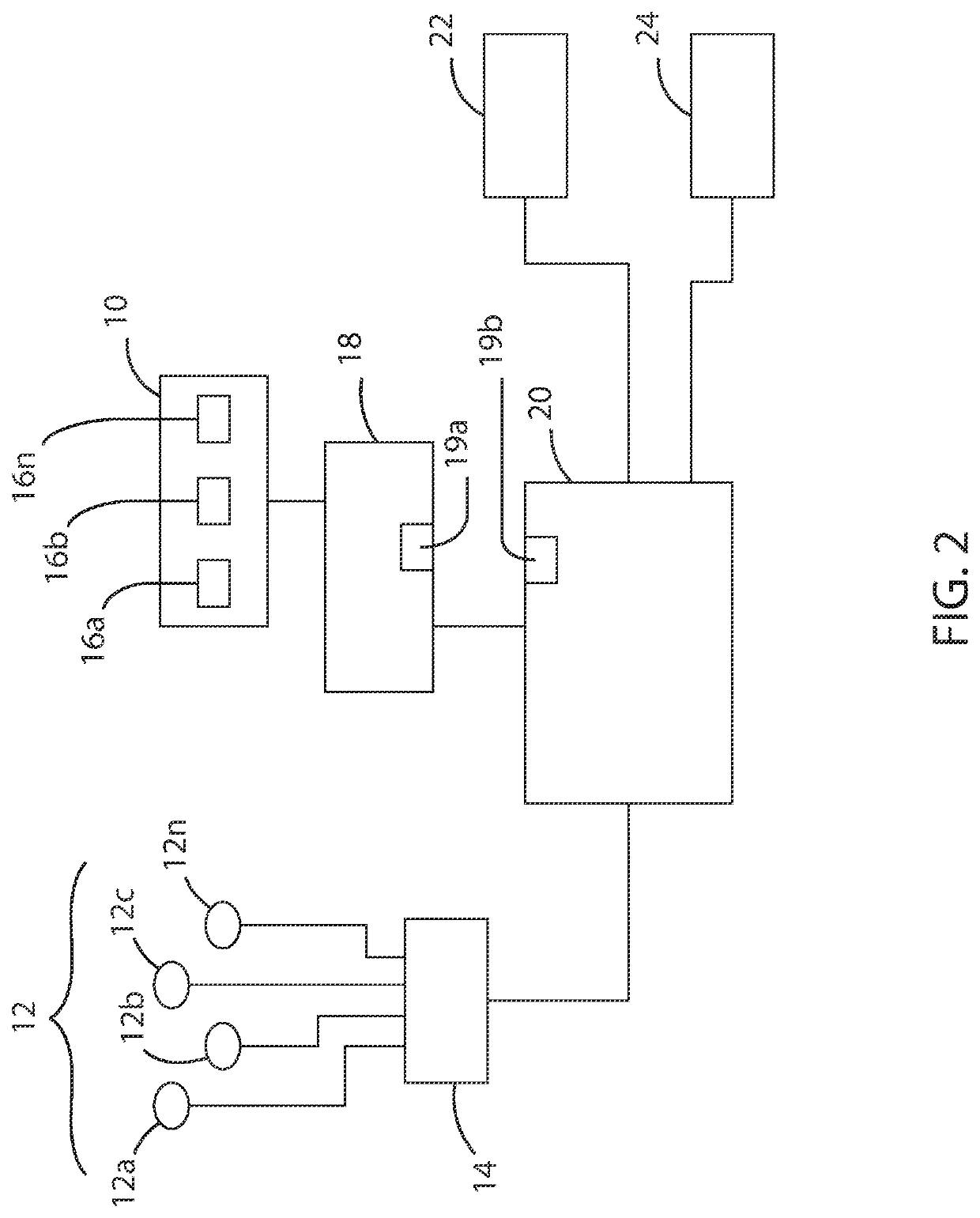System and method for determining user intention from limb or body motion or trajectory to control neuromuscular stimuation or prosthetic device operation
a technology of neuromuscular stimulation and user intention, applied in the field of system and method for determining user intention from limb or body motion or trajectory to control neuromuscular stimulation or prosthetic device operation, can solve the problems of affecting the quality of life of survivors, affecting the arm and hand movements of survivors, and cumbersome switch actuation
- Summary
- Abstract
- Description
- Claims
- Application Information
AI Technical Summary
Benefits of technology
Problems solved by technology
Method used
Image
Examples
Embodiment Construction
[0030]Some patients who have suffered neurological injury, such as a stroke or spinal cord injury have lost the ability to control motion in one part of their body but retain the ability to move other body parts. In some cases, the residual limb motion may allow the patient to move their shoulder and upper arm and to flex their elbow while the ability to control the motion of the hand, for example, to grasp an object, is lost. In other cases, a patient may have lost the ability to articulate their knee and ankle, while they retain residual motion of their hip. In the case of amputees, a patient may retain complete function of the residual portion of the amputated limb.
[0031]A system according to embodiments of the present disclosure senses and recognizes—through machine learning methods—residual limb trajectories and body motions in space and discerns the intention of the user to perform a specific action. Using sensors on the arms, legs, and / or body, a wide variety of two- and thre...
PUM
 Login to View More
Login to View More Abstract
Description
Claims
Application Information
 Login to View More
Login to View More - R&D
- Intellectual Property
- Life Sciences
- Materials
- Tech Scout
- Unparalleled Data Quality
- Higher Quality Content
- 60% Fewer Hallucinations
Browse by: Latest US Patents, China's latest patents, Technical Efficacy Thesaurus, Application Domain, Technology Topic, Popular Technical Reports.
© 2025 PatSnap. All rights reserved.Legal|Privacy policy|Modern Slavery Act Transparency Statement|Sitemap|About US| Contact US: help@patsnap.com



